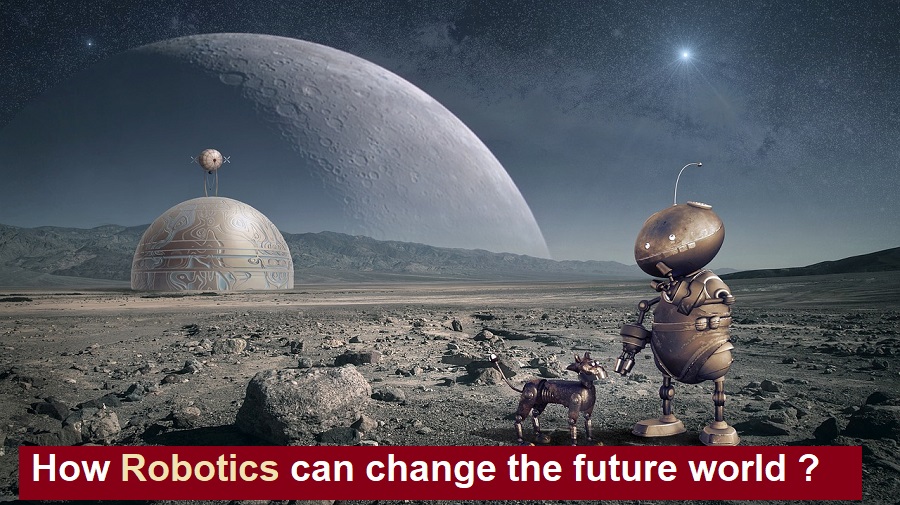Sci-fi technology will be a reality in a few years from now with morning breakfasts being cooked and served by humanoid robots. Household chores will be handled by humanoid robots, easing our life with no issues of meeting the demands of domestic workers. Life will be much more stress-free with robots as domestic workers.

Humanoid robots are already working as care-givers at Tokyo’s Shin-tomi Nursing Home. Twenty different models of humanoid robots are taking care of its residents, and the Japanese government expects that this robotics expertise will help assist the elderly population tirelessly.
The food industry is of utmost importance to every country and has the highest demand always. But the rapid increase in workers’ demands is a major predicament for most employers. Technology, however, has come to help in a big way by introducing humanoid robots in the workforce. Restaurants in China, Japan, and the US have started with humanoid robotic waiters to serve customers. The Chinese e-commerce giant Alibaba has launched little robotic waiters serving the customers; they are capable of raising the glass cover and announcing in a low tone, “Enjoy your meal”. By the year 2020, JD.com has announced to open 1000 restaurants with foods being prepared and served by robots. Soon it will be more cost-effective and more efficient to use robots.
Also, a vast change is in the offing in the modes of transportation in the next decade. Driverless cars will be on road and will drive our children to schools and us to our destinations. BMW, the car giant has already introduced 40 prototype cars for trials on roads with autonomous technology that enables cars to drive themselves on public roads without human intervention. These cars use sensors to look at the world around it, and cameras embedded on the car read the road markings, the radar measures speed and distance, the laser sensors known as LIDAR provide the real-time details and they all come together to create a real-time 3D mapping of the area. Connected technology allows cars to communicate with messages coming from other cars and infrastructures such as traffic lights in order to help reduce congestions.
We need to make roads in our country ready to facilitate this new technology. The Autonomous Vehicle Readiness Index (AVRI) is a pioneering study that focusses on a country’s preparedness to introduce self-driving vehicles and is guiding countries on how they can improve their readiness for autonomous vehicles (AV). According to the 2018 KPMG Autonomous Vehicle Readiness Index (AVRI), the most prepared country for the introduction of self-driving vehicles is Netherlands, followed by Singapore and the United States.
A personal flying machine is another new mode of transportation expected to be actively used in the years to come. With flying bikes to move from one place to another, Boeing, the aircraft manufacturer, has moved ahead to sponsoring a $2 million dollar contest called GoFly to encourage the creation of a “personal flying device” that can carry a person 20 miles without refueling or recharging, with a vertical or near vertical take-off and landing. The natural reserve of fossil fuel is diminishing with growth in demands from the number of increase in vehicles every year. But thanks to scientific inventions and discoveries, the solar car is going to be a reality now. By the second half of 2019, solar cars by Sion, a Germany-based manufacturer, will be out for sale and will cost around 20,000 Euros, with battery. The vehicle has 330 solar cells integrated onto its hood, side doors and roof, and we only need to charge it while we drive. Not lagging behind in sports car race, the Sasol Solar Challenge 2018, with solar fuelled cars, was championed by the Dutch Nuon Solar team after completing 4030.4 kms on public roads from Pretoria to Stellenbosch just recently. So we are already on our next jump from diesel/ petrol cars to solar-powered cars.
At present, we are identified by our parent’s name, our date of birth and country of birth that is incorporated into separate identification cards. In the near future, these will be replaced by inbuilt radio-frequency identification (RIFD) chips implanted into our body. We have often seen movie characters unlocking doors with their mere palms. Well, that will be a reality soon. A Radio-Frequency Identification (RFID) transponder, encased in silicate glass, of the size of a grain of rice, is implanted under the skin and it will have communication capabilities with other cutting-edge applications that have all the information of the specific individual in the passcode. We will no longer need to carry our keys/cards to unlock our doors or to prove our identity. Computers will use their sensors to identify users in the workplace when they log in, and will allow them to access files as per the specifications. Credit cards will be replaced by the chip as “bio-payment” in the near future, and we will soon have a truly cashless society. Countries like Sweden already have thousands of citizens using this technology.
Diseases will be conquered by nano-medicines that will eradicate hereditary diseases by manipulating the DNA. And vital organs will be replaced by artificially developed man-made organs to increase vitality. Slowly but surely, we are stepping into another revolution where man-made inventions will make our life easier, safer and faster.